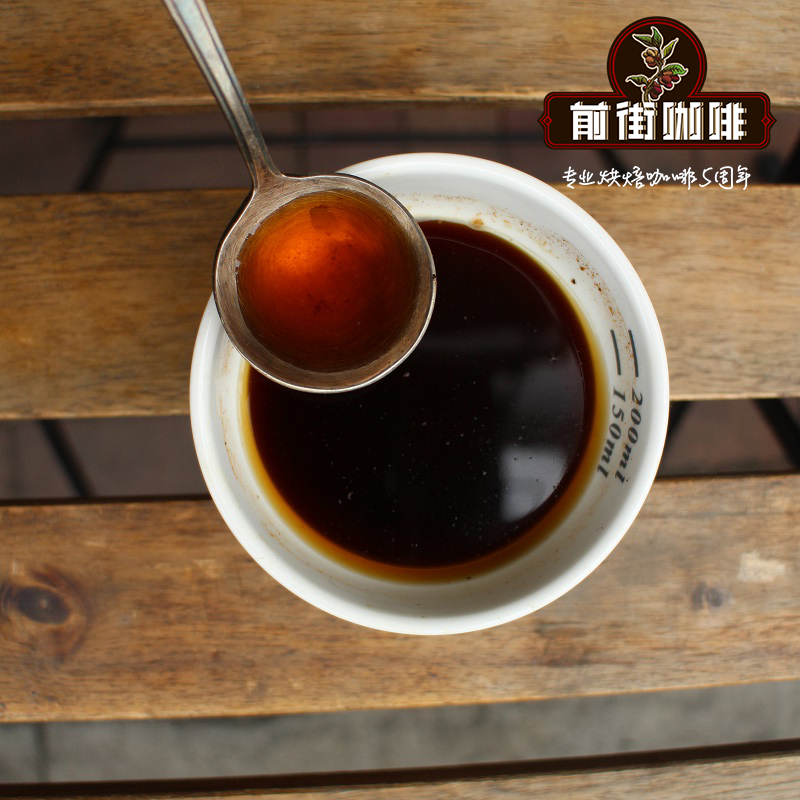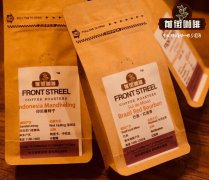What are the picking methods and handling methods of coffee beans? What's the difference between manual picking and machine picking?

Professional coffee knowledge exchange more coffee bean information please follow the coffee workshop (Wechat official account cafe_style)
What are the picking methods and handling methods of coffee beans? What's the difference between manual picking and machine picking?
From the major coffee-producing countries, we can find that almost all coffee is produced in countries with more cheap labor, so it is not difficult to see that the process of harvesting coffee beans requires a considerable amount of manpower. The harvest of coffee is very hard, and it takes a lot of manpower, especially in many high-quality coffee, only the fully ripe red cherry-shaped fruits of coffee trees can be picked to make high-quality coffee, and because of this, because the red cherry-shaped fruits of all coffee trees do not ripen at the same time So it also needs to go back to the same tree in stages to pick the red cherry-like fruit of the coffee tree.
1 planting
Coffee beans are actually the seeds of coffee trees. When coffee beans are dried, they are roasted and ground into powder before they can be used for cooking. If the coffee beans are not treated, they can be used to grow into coffee trees.
Coffee seeds are usually planted in the nursery first, and some time after germination, the seedlings are transplanted to the planned land to grow separately. Seedling transplanting needs to be carried out in a relatively humid season, so that the moisture in the soil can be maintained and the roots can grow steadily.
2 picking fresh fruits of coffee
According to different varieties, it takes 3-4 years for coffee trees to grow coffee fruit. This kind of fruit is called fresh coffee fruit, also known as coffee cherry. When the fruit is ripe, it will show bright red and can be picked at this time.
Generally speaking, there is one production season every year, but in some countries, such as Colombia, it blossoms twice a year, so there is a main picking season and a second picking season.
In many countries, it is picked by hand, so there is a great demand for labor. Some countries like Brazil, because the terrain is relatively flat, most of the coffee is harvested by machine.
There are two main methods when picking.
Pruning: whether by hand or by machine, all fresh coffee fruits are picked directly from the branches.
Selective picking: only ripe fruits are selected when picking, usually through manual picking. Pickers pick ripe fruit every 8-10 days, because this method requires a lot of labor and high cost, so it is mainly suitable for picking boutique Arabica coffee.
A good picker can pick an average of 100-200 pounds of fresh fruit a day and eventually produce 20-40 pounds of coffee beans.
3 fresh fruit treatment method
After the fresh fruit of coffee is picked, we should proceed to the next step-fresh fruit treatment as soon as possible. There are three commonly used treatment methods, namely, sun treatment, washing treatment, and honey treatment.
Wash it with water and explain briefly how to deal with the fresh fruit of coffee.
First of all, fresh fruits picked freshly should be hand-picked or floated to select fresh fruits with moderate maturity and high density, and the over-ripe and immature fruits should be graded.
Then put the selected fresh coffee fruit into the desiccator and remove the exocarp and pulp of the fresh fruit.
The coffee beans are then graded according to their weight as they pass through the sink, with light beans floating on top and heavy beans sinking to the bottom. In this way, the coffee beans will be graded according to size after passing through several sinks.
After grading, the coffee beans enter a large fermentation tank filled with water. According to the conditions of the beans, as well as the local climate and altitude, the coffee beans will ferment for 12-48 hours. This process removes the pectin layer that still adheres to the inner pericarp of the coffee beans.
After fermentation, the coffee beans will be rinsed again with water to prepare for drying.
In addition, the picked coffee fruit also needs to be processed.
Generally speaking, the processing of raw coffee beans can be divided into two ways, one is washing, the other is drying.
1. Washing type:
As the name implies, it is a way of washing and screening, first removing the pulp of the harvested coffee fruit.
Then the coffee fruit without pulp is soaked in a tank full of water and then fermented to a certain extent.
The fermented coffee beans are poured out and washed with clean water, then the excess water is removed, dried in the sun or dried by machine.
Finally, a special sheller for coffee beans is used to remove the pulp and peel, that is, raw coffee beans.
2. Drying method:
Compared with the water washing method, the drying method is relatively simple. The coffee fruit after harvest is spread in the local exposure field for two weeks, and the coffee beans are swept several times a day with manual rakes, so that the coffee beans can be dried more evenly.
When the fruit is dried, the coffee beans will be separated from the skin, and then use a sheller to remove the dried pulp and peel.
These two production methods have their own advantages and disadvantages, but both can produce high-quality coffee beans. generally speaking, the coffee beans produced by washing have relatively distinct acidity and the same quality; the acidity of dry coffee is lower than that of washing coffee, and the flavor is also more diversified.
4 dried coffee beans
On a sunny day, the beans are basked on the viaduct in the hot sun
Coffee is usually dried to a moisture content of about 11% before it can be stored.
The coffee during the drying process is still covered with endocarp and can be spread on a tanning bed or on a clean floor, and should be turned frequently. If possible, coffee beans will be dried directly with large machines. After drying, the coffee beans are still bagged with endocarp.
5 hulling by processing
Coffee with endocarp needs to be shelled before transportation
Shelling is to remove the endocarp of the processed coffee in the machine.
Graded and stored by the size of coffee beans, and sometimes according to the color of coffee beans
Generally speaking, the size of coffee beans ranges from 10 mesh to 20 mesh. This number represents the size of the hole in the sieve. The size of each hole is a multiple of 1 green 64 inch, 10 mesh is about 10 inch 64 inch, and 15 mesh is 15 inch 64 inch.
In the end, defective beans will be picked out by hand or machine, such as coffee of the wrong size or color, overfermented coffee beans, worm-eaten beans, shell beans, unripe beans, etc.), and the final exported coffee beans are of better quality.
6 coffee product test
Before the importer imports the coffee, he will ask the exporter for a sample and decide whether to buy it after a cup test and evaluation.
The quality of coffee is evaluated by a professional cup tester.
The cup tester will bake the sample and test the cup within 8-24 hours. When the cup is tested, the coffee will be evaluated by its dry, wet, sweet, acidity, sweetness, mellow thickness, and defects, and finally a score will be given to the coffee.
Through the score given by the cup tester, the raw bean trader will know whether the price of coffee is moderate, the ideal quantity to buy, and so on.
7 Coffee export
After the importer agrees to buy the coffee, the coffee will be exported by shipping and other means.
The coffee for export is shelled coffee beans, which is what we usually call raw coffee beans, usually packed in buckets or bags and shipped on cargo ships.
According to the data, the output of coffee in the 16th season in 2015 was about 152.7 million bags (60 kg each).
8 Coffee roast
Roasting converts raw coffee beans into coffee roasted beans that we can buy directly in coffee shops.
The baking process lasts about 8-12 minutes. The baking curves of different beans or different combinations of beans are different. In order to show the best flavor of coffee, roasters find out the most suitable baking curve for each type of coffee through continuous experiments.
9 ground coffee
The purpose of grinding is to show the flavor of coffee as fully as possible, and different brewing methods require different degrees of grinding.
Generally speaking, the finer the coffee is ground, the faster the coffee is extracted, which is why the powder of espresso is much finer than that of brewing.
When making espresso, the degree of grinding is very important for the stability and flavor of the concentrate, so baristas spend some time adjusting the grinder every day after turning on the bean grinder or when using different coffee beans. otherwise, the taste of the coffee you drink in the morning may be very different from that in the afternoon.
10 brewing coffee
Brewing coffee is the last process of presenting coffee to consumers.
There are many kinds of brewing methods, including V60 brewing, chemx brewing, French pressure pot brewing, Philharmonic pressure, siphon pot, smart cup, of course, espresso, and so on.
A cup of coffee has gone through the above ten steps before it finally becomes our coffee.
Important Notice :
前街咖啡 FrontStreet Coffee has moved to new addredd:
FrontStreet Coffee Address: 315,Donghua East Road,GuangZhou
Tel:020 38364473
- Prev

Indonesian Tiger Mantenin | unique treatment-Why use wet planing?
Professional coffee knowledge exchange more coffee bean information please follow the coffee workshop (Wechat official account cafe_style) Ache Sumatra Tiger Mandheling Aceh Sumatran tiger Mantenin producing area: Aceh varieties: Caturra, Typica, Sidikalong soil: volcanic soil altitude: 1500m treatment method: wet planing method 01 | production area introduction Indonesia is a group
- Next

Black Diamond Gold Manning Sumatran Coffee | recommended for hand-made coffee beans
Professional coffee knowledge exchange more coffee bean information please follow the coffee workshop (Wechat official account cafe_style) front street coffee recommended hand-made single coffee beans-PWN gold Indonesia Sumatra Black Diamond Golden Mandheling G1 TP Indonesia Sumatra plus baby black diamond gold Manning flavor description: rich coffee aroma with vanilla and
Related
- Detailed explanation of Jadeite planting Land in Panamanian Jadeite Manor introduction to the grading system of Jadeite competitive bidding, Red bid, Green bid and Rose Summer
- Story of Coffee planting in Brenka region of Costa Rica Stonehenge Manor anaerobic heavy honey treatment of flavor mouth
- What's on the barrel of Blue Mountain Coffee beans?
- Can American coffee also pull flowers? How to use hot American style to pull out a good-looking pattern?
- Can you make a cold extract with coffee beans? What is the right proportion for cold-extracted coffee formula?
- Indonesian PWN Gold Mandrine Coffee Origin Features Flavor How to Chong? Mandolin coffee is American.
- A brief introduction to the flavor characteristics of Brazilian yellow bourbon coffee beans
- What is the effect of different water quality on the flavor of cold-extracted coffee? What kind of water is best for brewing coffee?
- Why do you think of Rose Summer whenever you mention Panamanian coffee?
- Introduction to the characteristics of authentic blue mountain coffee bean producing areas? What is the CIB Coffee Authority in Jamaica?

